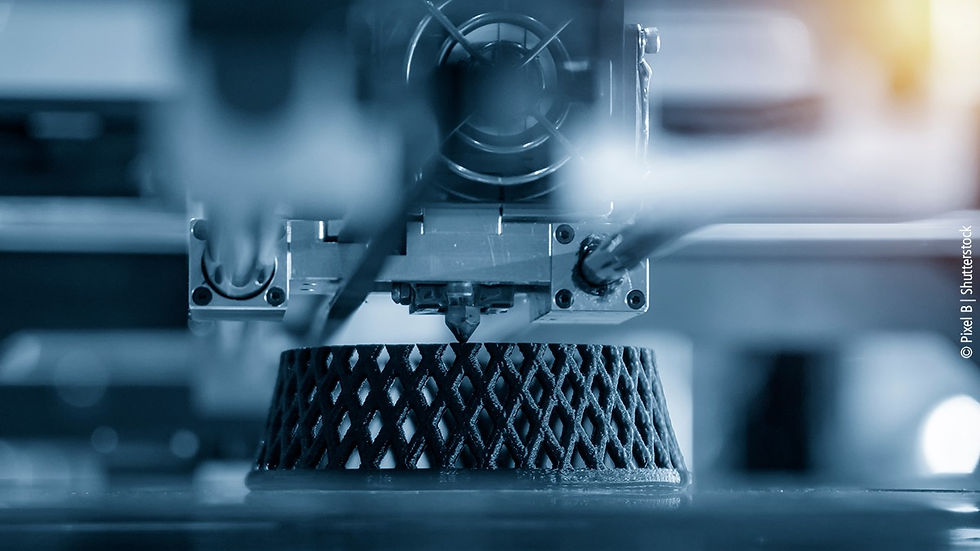Compact Motion Control Helps Keep 3D Printing Equipment in Line with End User Requirements
- Paxton Shantz

- May 2, 2022
- 3 min read
The success of additive manufacturing technology is often measured by the efficiency and reliability of the controls

By nature, 3D printers must maintain as compact and efficient a footprint as possible. This holds true for consumer and hobbyist products, but also for industrial solutions used in rapid manufacturing of prototype products or series production that relies on 3D printers instead of traditional manufacturing methods. Not only must the automation system remain compact and capable of installation inside the printer frame, reducing or eliminating reliance on electrical cabinets, but the motion control should also be fully integrated, ensuring as few pieces of hardware as possible with minimized cabling.
Fortunately, modern PC-based control technology offers a highly efficient and compact approach to automation and motion control in additive manufacturing. This is done using hardware and software that have demonstrated performance increases and space savings in numerous industries for decades.
Motion control, miniaturized
Automation using industrial PC technology has been all about hardware consolidation. That means fewer devices or even one device that can do more work in a compact footprint. While this has been expanded to include a vast number of automation, control and measurement functions, it initially meant the combination of PLC, HMI and motion control on one powerful device. This was made possible due to the ever-expanding power of commercial off-the-shelf (COTS) processors from the dominant suppliers such as Intel and AMD.
Moore’s Law for the doubling of transistors in microprocessors made this possible then and now. The ripple effects from the continued increase in processor performance in smaller chipsets reach far and wide. Automation technology leaders like Beckhoff have capitalized on this redoubling of processing power with industrially hardened industrial PCs (IPCs) that can do far more work than a traditional PLC, PAC or standalone motion controller can on their own.

Today, one IPC in a 3D printer can pull double, triple, quadruple duty or more in a footprint comparable to one single-purpose legacy device. Motion control, logic, CNC, and visualization are solidly within the job responsibilities of the central industrial PC used for overall machine control.
Beyond smaller control systems, benefits extend to hardware cost reductions, less wiring, fewer software platforms and networks to manage, reduced programming and commissioning time, faster time to market, simplified vendor arrangements and more. Equipment manufacturers can literally use one universal software platform for all automation software development and programming.
Is it I/O? Is it a drive? It’s both.
The power of miniaturization in electronics has extended to drive technology and amplifiers as well. Servo drives have become much smaller, but also more modular. Modular drive users can add modules as needed for multiple motion axes, power supply and safety technology. These drive modules directly connect without wiring, cables or any space between them when mounted. Additionally, One Cable Technology (OCT) servomotors have become the norm, reducing cabling and connectors between motors and drives by 50%.

Making yet another leap in space savings, there are even a variety of plastic and metal I/O terminals with built-in drive technology. This means compact motors can be run to 12 – 30 mm wide I/Os that can handle the drive functionality for multi-axis CNC and more. The space-saving terminals can be added onto the same rack as all the other I/O, including those for machine safety, in a fully compatible format. Other I/Os on the same DIN rail can connect with devices commonly found in 3D printers such as flow meters, blowers, VOC, bed heaters and sensors that constantly measure PSI, temperature, vibration and more.
It is even possible to fully embed the Beckhoff I/O system at the board level using pluggable I/O modules, including those for motion control. Even better, there are options for distributed drives that integrate a complete servo drive on the back of a servo motor. This fusion of devices only increases the length of the motor without altering other dimensions.
Combined, these I/O and drive technology formats offer exciting opportunities in additive manufacturing to dramatically reduce 3D printer footprint. The available options and resulting possibilities are limitless.
Size matters in motion control for 3D printing. Is it time for you to downsize your drive technology footprint? Contact your local Beckhoff sales engineer today.

Paxton Shantz is the Digital Manufacturing Industry Manager for Beckhoff Automation LLC.



Comments